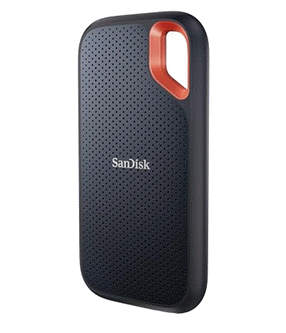2025-06-18 01:25:00
www.omgubuntu.co.uk
If you spend a lot time in a terminal on Linux you’ll have preferred command-line text editor, but Microsoft’s recently announced open-source offering, simply called Edit, might be worth checking out — if only so you know you’re not missing out.
Edit is a remake/reboot of the old MS-DOS Editor, updated to suit current sensibilities. Built using Rust, it aims to deliver a user experience that, per its GitHub page, provides “modern interface and input controls similar to VS Code.”
Microsoft says it made Edit “to provide an accessible editor that even users largely unfamiliar with terminals can easily use” on Windows if/when needed, out-of-the-box (as recent versions of Windows do not include a CLI text editor in recent versions).
The arrival of Edit will mean Windows devs aren’t forced to fire up notepad.exe to make a simple shell script edit, but is there any benefit to running the app on Linux?
Note: When I spotlight apps, tools and utilities on this blog, it’s not because I think you (or anyone) “MUST” use them. I simply showcase choices. Whether you choose to use them is up to you.
Why would Linux users use Edit?
Windows is the primary target for Edit since it lacks a built-in CLI text editor natively so the fact you can use Edit on Linux (and macOS) is more of bonus than purpose.
But if you use Linux and VSCode your muscle memory might like the fact Edit shares many of the latter’s keybindings. This could make it easier to slot in to your workflow compared to vim or nano (though I stress it’s not a replacement for either of those).
Not that only avowed VSCode fans will see the appeal.
The simplicity of the text-driven UI (TUI) makes it less complex to learn, while the speed of Edit, even when seeking across lines in giant 1GB+ files, is impressive — both USPs are by design.
Eager to avoid “how to exit vim” memes, Microsoft designed Edit as a modeless text editor (as opposed to a multi-mode one like Vim, where you need to learn how to activate different modes and switch between them as needed).
You can use a mouse or a keyboard to access menus, select lines or regions of text, position the caret, etc which makes using it feel more intuitive in use than the either/or approach of (admittedly more capable) alternatives.
Edit offers up a modest, lightweight set of features (and an equally modest footprint: a mere 250kB out of the box, and fast file opening) including:
- Find and Replace (supports Match Case & Regular Expression)
- Word wrap on resize (optional)
- Set tab/space indentation
- Set/change file encoding
- Line Feed (LF) or Carriage Return + Line Feed ( CRLF)
- Open multiple files
There’s pretty much all there is right now. Edit has no syntax highlighting, no range of colour schemes, no command prompt, and few creature comforts common in other command line text editors.
Edit is designed to edit text, rather than handle complex task better suited to IDEs.
More features are planned, including colour schemes and a settings TUI, so the list of features will grow in time, but as Microsoft’s aim is speed and simplicity, don’t expect too many bells and whistles.
Edit is open source so anyone can modify, contribute, package or fork it.
How to Run Edit on Ubuntu
Edit is free, open source software that works on Windows, Linux and macOS (so no, you don’t need to using Windows to make use of it).
Right now there is no official “installer” for Linux, and no unofficial DEB of PPA, though there is a snap. A couple of Linux distributions now package Edit, including Arch Linux, and Manjaro, so if you use one of those, you can install it properly.
To run Edit on Ubuntu you can download the latest binary from the project GitHub releases page (be sure to select the correct one for your architecture), extract the package, cd into the extracted folder, then launch the binary each time you want to use it:
- Download the latest release (link above)
- Extract the archive (right-click in Nautilus > Extract)
- Open a terminal app (such as the new Pytxis in Ubuntu 25.10)
- Navigate to the extracted folder:
cd /path/to/ - Run Edit directly:
./edit
To install the unofficial snap build use App Center (search ‘msedit’) or run sudo snap install msedit from the command line, and use msedit to launch it. On my laptop, the snap takes ~5 seconds to open. The official binary is instantaneous. YMMV.
From there, the interface is easy enough to figure out.
Give it a try and let me know what you think!
Keep your files stored safely and securely with the SanDisk 2TB Extreme Portable SSD. With over 69,505 ratings and an impressive 4.6 out of 5 stars, this product has been purchased over 8K+ times in the past month. At only $129.99, this Amazon’s Choice product is a must-have for secure file storage.
Help keep private content private with the included password protection featuring 256-bit AES hardware encryption. Order now for just $129.99 on Amazon!
Help Power Techcratic’s Future – Scan To Support
If Techcratic’s content and insights have helped you, consider giving back by supporting the platform with crypto. Every contribution makes a difference, whether it’s for high-quality content, server maintenance, or future updates. Techcratic is constantly evolving, and your support helps drive that progress.
As a solo operator who wears all the hats, creating content, managing the tech, and running the site, your support allows me to stay focused on delivering valuable resources. Your support keeps everything running smoothly and enables me to continue creating the content you love. I’m deeply grateful for your support, it truly means the world to me! Thank you!
|
BITCOIN
bc1qlszw7elx2qahjwvaryh0tkgg8y68enw30gpvge Scan the QR code with your crypto wallet app |
|
DOGECOIN
D64GwvvYQxFXYyan3oQCrmWfidf6T3JpBA Scan the QR code with your crypto wallet app |
|
ETHEREUM
0xe9BC980DF3d985730dA827996B43E4A62CCBAA7a Scan the QR code with your crypto wallet app |
Please read the Privacy and Security Disclaimer on how Techcratic handles your support.
Disclaimer: As an Amazon Associate, Techcratic may earn from qualifying purchases.
































![THYMESIA | 16 MINUTES OF GAMEPLAY | [1080P 60 FPS]](https://techcratic.com/wp-content/uploads/2025/09/1757557932_maxresdefault-360x180.jpg)










































































